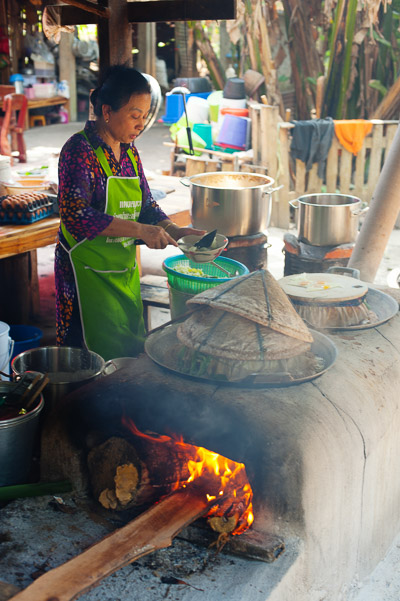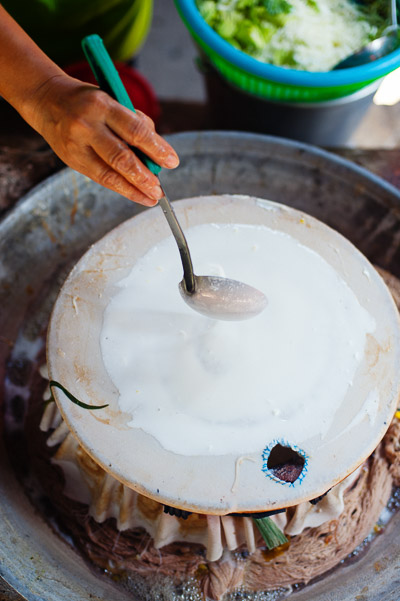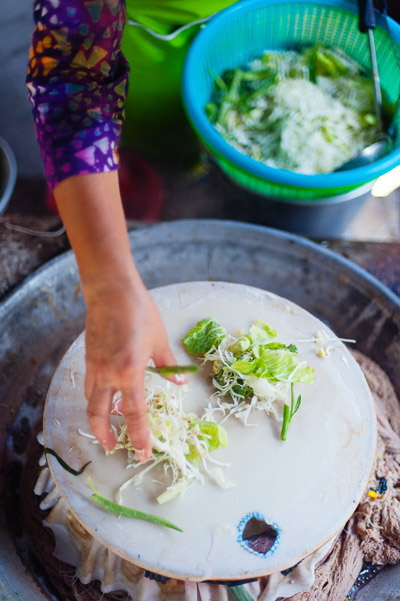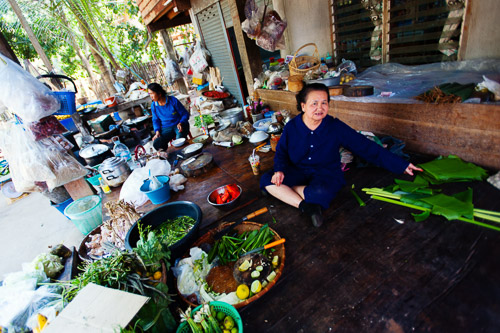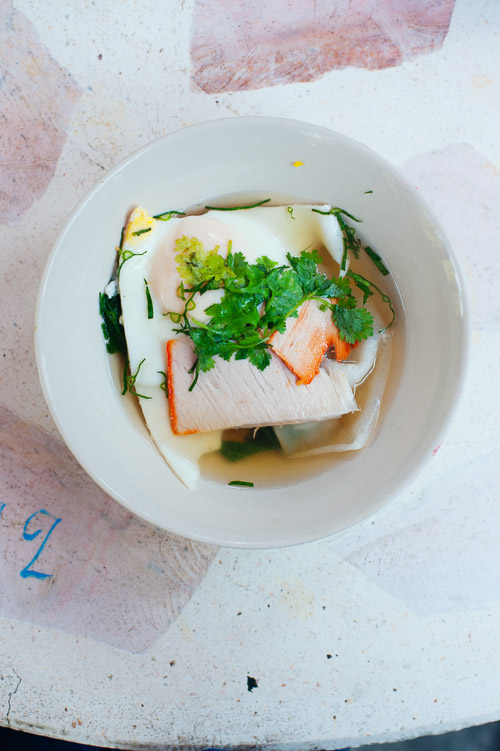 There's nothing more fun than discovering a new noodle dish. That is, unless that noodle dish has a funny name.
There's nothing more fun than discovering a new noodle dish. That is, unless that noodle dish has a funny name.
Ban Na Ton Jan, located in the far north of Sukhothai Province, is a beautiful village that's home to an award-winning homestay programme. But more importantly, it's also home to khao poep (ข้าวเปิ๊บ), a unique noodle dish, the name of which is pronounced a lot like "cow burp".
To make the dish, rice flour and water are combined and left to ferment for three days. The batter is then poured on a taut cloth elevated over simmering water:
The cloth is covered with a lid and allowed to steam for a minute or so, which results in a fresh noodle of sorts. A fistful of vegetables -- bean sprouts, water spinach, and young Chinese kale -- are then put on top of the semi-steamed noodle:
the lid is closed again, and the vegetables are steamed until just tender. The noodle is then folded -- poep being a dialect word for the central Thai phap (พับ), meaning "to fold" -- around the vegetables:
resulting in a neat package -- something of a vegetable-filled wonton. The noodle is then served in a bowl of homemade pork broth, topped with an egg that has been steamed in the same fashion, and a couple slices of barbecue pork, and garnished with coriander and chiffonaded sawtooth coriander (shown at the top of this post).
Khao poep combines ingredients and techniques I've encountered elsewhere in the Tai culinary world, but is not a dish I've encountered anywhere else. That's because the eponymous owner claims to have invented it. Yay (grandma) started selling khao poep nearly 40 years ago, and today the dish has become associated with Ban Na Ton Jan.
They also sell something called kuaytiaw bae (ก๋วยเตี๋ยวแบ):
It may look like a fried noodle dish, but in reality it's more like a 'dry' noodle soup.
To make the dish, dried rice noodles are put over the same steaming device:
topped with bit of broth, some ground pork and vegetables, and allowed to steam. When soft, they're removed from the steamer, topped with a couple slices of barbeque pork, ground peanuts, crispy deep-fried pork fat and a healthy drizzle of garlic oil. The dish is served on a banana leaf with section of lime, along with the usual optional noodle condiments: fish sauce, sugar, dried chili. Why banana leaf? An ancient tradition? A dogmatic adherence to the Old Ways? "We don't have to wash the dishes," according to Yay Khrueang's daughter. "It's less work."
A YouTube video, in Thai, that shows how khao poep is made:
Yay Khrueang Ban Na Ton Jan, Sukhothai 6am-3pm












